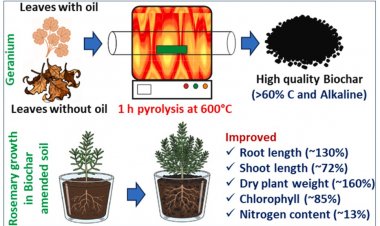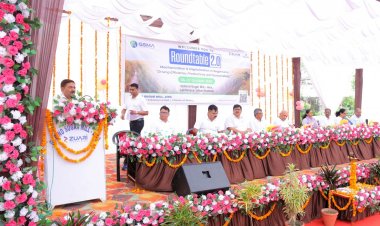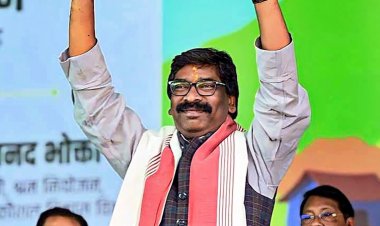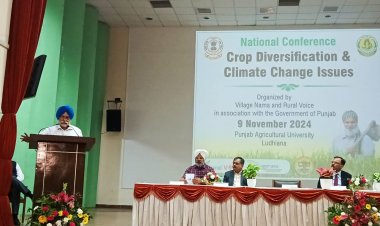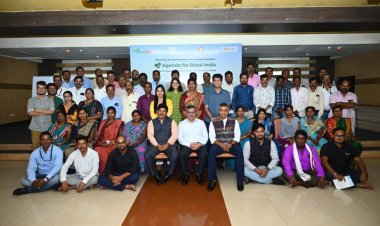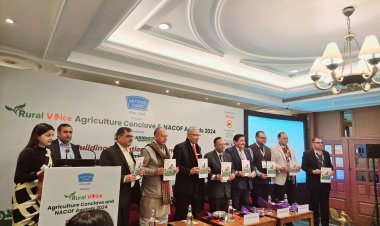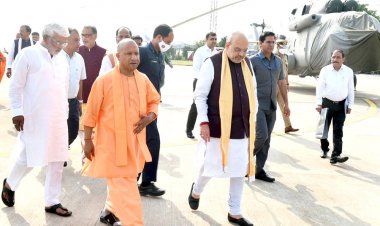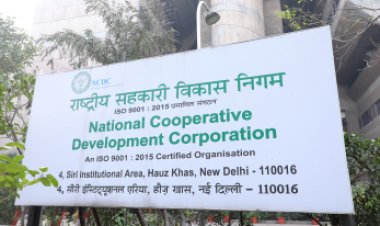Adaptation of scientific agriculture practices will drive global demand towards Indian cotton farmer
Speaking about the sustainable practices for cotton farming in India, CK Patel, AGM - Agronomy & Marketing, Netafim India said, “To turn around the prevailing scenario, it is imperative to make farmers aware of healthier cotton practices and adaptation of scientific farming techniques.”
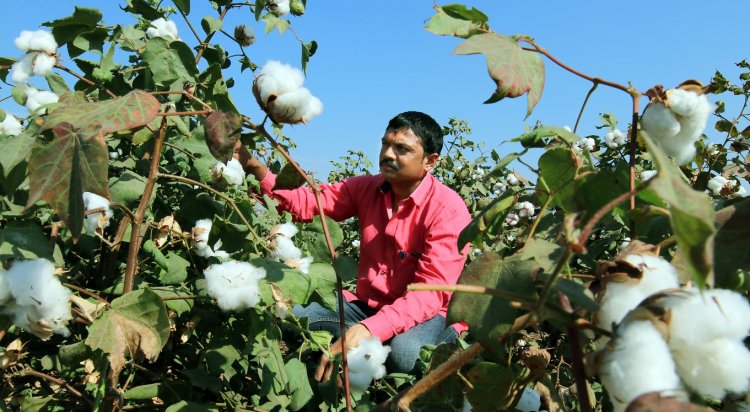
Cotton continues to enjoy a pre-eminent status for the textile industry globally as well as in India. Having the most favoured fibre status, it is an immensely important crop for the sustainable livelihood of the Indian cotton farming community. Presently, nearly 50 to 60 million people depend on cotton cultivation, marketing, processing and exports for their livelihood across India. In the last few years, the cultivation of cotton has been steadily declining globally. The world cotton farming experienced dramatic developments in 2020-21 due to an unprecedented pressure caused by the Covid-19 pandemic.
Global scenario of cotton production and consumption
As per the report of the United States Department of Agriculture (USDA), the global 2020-21 cotton farming is down 6.5 per cent from the previous year to 114.1 million bales. The farmers of major cotton-producing countries (India, China, US, Brazil and Pakistan) are facing a challenge to compete with their counterparts both in terms of per hectare yield as well as produce. Adverse weather, an infestation of pink bollworm in cotton crops, lower prices, higher labour cost and policy uncertainty all have contributed to the sharp decline. Additionally, the decreased synthetic fibre prices driven by substantially lower oil prices have placed huge competitive pressure on world cotton markets. Normally, India produces up to nearly 3.5 crore bales of cotton, whereas China produces nearly 3.25 crore bales, the US produces 2.5 crore bales followed by Brazil and Pakistan, which produce nearly 1.5 and 0.65 crore bales respectively. Although the US and Brazil are major exporters of cotton, the production in both countries has been declining for two consecutive years, resulting in insufficiency to support the global import demand and a high price of cotton.
In terms of cotton consumption, Asian countries dominate the global market. Cotton consumption in China is around 4.75 to 5 crore bales, which is higher than that in other countries of the globe. Pakistan’s cotton consumption is 1.35 crore bales. In recent years, strong growth of the spinning and textile industry has spurred the consumption of cotton in Bangladesh and Viet Nam. Bangladesh requires 90 lakhs to 1 crore bales of cotton and Vietnam 75 to 80 lakh bales. Due to their proximity to India, all these Asian countries import a substantial quantity of cotton from India. If we talk about the situation in India, the consumption of cotton is increasing here. Due to the phenomenal growth of the domestic textile industry in the last two decades along with the Indian spinning industry, the country has become one of the largest consumers of cotton, i.e., it has a share of about 23 per cent of world cotton consumption.
The brighter spot for cotton farmers globally
The global acreage for cotton has been constant for the last few years. As the world economy recovers from the severe 2020 downturn, the global cotton consumption is expected to grow by 4.1 per cent in the 2021-22 season, substantially above the long-term average rate of 1.7 per cent, according to the USDA. The world cotton production is projected to grow 1.5 per cent per annum to reach almost 30 million tonnes in 2029. This growth will come from an expansion of the cotton area (0.5 per cent per annum) as well as growth in average global yields (1 per cent per annum), suggest OECD-FAO Agricultural Outlook 2020-2029.
Indian cotton farming: At a glance
India is one of the largest producers of cotton in the world accounting for about 26 per cent of the world cotton production. The country has the largest area under cotton cultivation, which is about 41 per cent of the world's area for the crop. The crop is mainly produced in Gujarat, Maharashtra, Andhra Pradesh, Haryana, Punjab, Madhya Pradesh, Karnataka, Rajasthan, Tamil Nadu, Odisha. The modernization of India’s cotton production — including the adoption of Bt varieties — propelled India to the top among the cotton-producing countries. The government policies, such as giving greater thrust to Research & Development in cotton, encouraging the use of quality seeds and pesticides by providing subsidies for such inputs, and price support measures, have also contributed to changing the cotton scenario in India.
Even with the impressive statistics of Indian cotton farming, the productivity per hectare has not reached its full potential over the years. Persistent adoption of unsustainable agricultural practices for the largely water-intensive crop, extensive use of fertilizers and pesticides, and genetic modification have posed a significant challenge that needs immediate attention. There is still a gap in the yield level of cotton obtained in India as compared to the global average. This means a higher land usage, but a lower income for farmers.
Today less than 10 per cent of cotton is grown in a way that actively protects the farmer’s economic growth and the environment. The latest trend suggests that the textile industry is becoming increasingly sensitive in choosing sustainable fibres to drive their textile supply chains since the outbreak of Covid-19. Hence, the buoyancy for a revival of Indian cotton farming is now driven by sustainable cultivation.
Speaking about the sustainable practices for cotton farming in India, CK Patel, AGM - Agronomy & Marketing, Netafim India said, “To turn around the prevailing scenario, it is imperative to make farmers aware of healthier cotton practices and adaptation of scientific farming techniques. Promotion of environmentally sustainable practices for the mass-produced cash crop along with the scientific and egalitarian application of water, (and) effective use of fertilizers and pesticides will help the Indian farmers achieve sustainable growth in cotton cultivation. Studies have proved that the adoption of suitable technology such as micro-irrigation in cotton farming helps in reducing input cost and increases income by increasing the number of crops they grow. The benefits include an increase in water use efficiency up to 80-90 per cent owing to reduced water requirement, about 20 per cent less consumption of electricity per hectare and up to 70-80 per cent increase in fertilizer use efficiency, which translates into significant cost savings. Controlled application of water and fertilizer has resulted in increasing the productivity of the crops up to 50 per cent. All these boost farmer income levels by more than normal.”
Besides the economic benefits, technology boasts a slew of social and environmental advantages as well. Since Indian farmers are receptive to take up any technology that brings certainty to their life and leads to an increase in income level, drip irrigation in cotton farming needs extensive propagation. The awareness generation campaigns and effective training amongst farmers remain the backbone of the success of micro-irrigation implementation in cotton cultivation.



 Join the RuralVoice whatsapp group
Join the RuralVoice whatsapp group


















